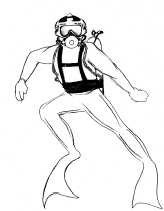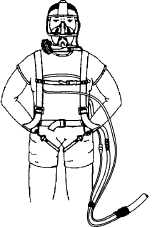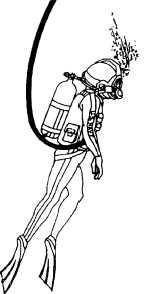CHAPTER 6 — Operational Planning
Change A 6-25
niques highlights the significant differences between the methods and outlines the
effect these differences will have on planning.
6-7.2
Operational Characteristics of Scuba. The term scuba refers to open-circuit air
scuba unless otherwise noted. The main advantages of scuba are mobility, depth
flexibility and control, portability, and reduced requirement for surface support.
The main disadvantages are limited depth, limited duration, lack of voice commu-
nications (unless equipped with a through-water communications system), limited
environmental protection, remoteness from surface assistance, and the negative
psychological and physiological problems associated with isolation and direct
exposure to the underwater environment.
6-7.2.1
Mobility. The scuba diver is not hindered by bulky or heavy equipment and can
cover a considerable distance, with an even greater range through the use of diver
propulsion vehicles (DPVs), moving freely in any direction. However, the scuba
diver shall be able to ascend directly to the surface in case of emergency.
WARNING
Scuba equipment is not authorized for use in enclosed space diving.
Figure 6-13. Air Diving Techniques. A choice of three air diving techniques are available: open circuit scuba,
surface-supplied gear (MK 20 MOD 0), surface-supplied deep-sea gear (MK 21 MOD 1), and surface-supplied
deep sea gear (EXO BR MS).
OPEN-CIRCUIT SCUBA
Normal working limit: 130 fsw
Operational necessity: 190 fsw
SURFACE-SUPPLIED DEEP-SEA GEAR
(MK 21 MOD 1)
Normal working limit with EGS: 190 fsw
SURFACE-SUPPLIED GEAR
(MK 20 MOD 0)
Normal working limit with EGS: 60
fsw
SURFACE-SUPPLIED GEAR
(EXO BR MS)
Normal working limit: 190 fsw







